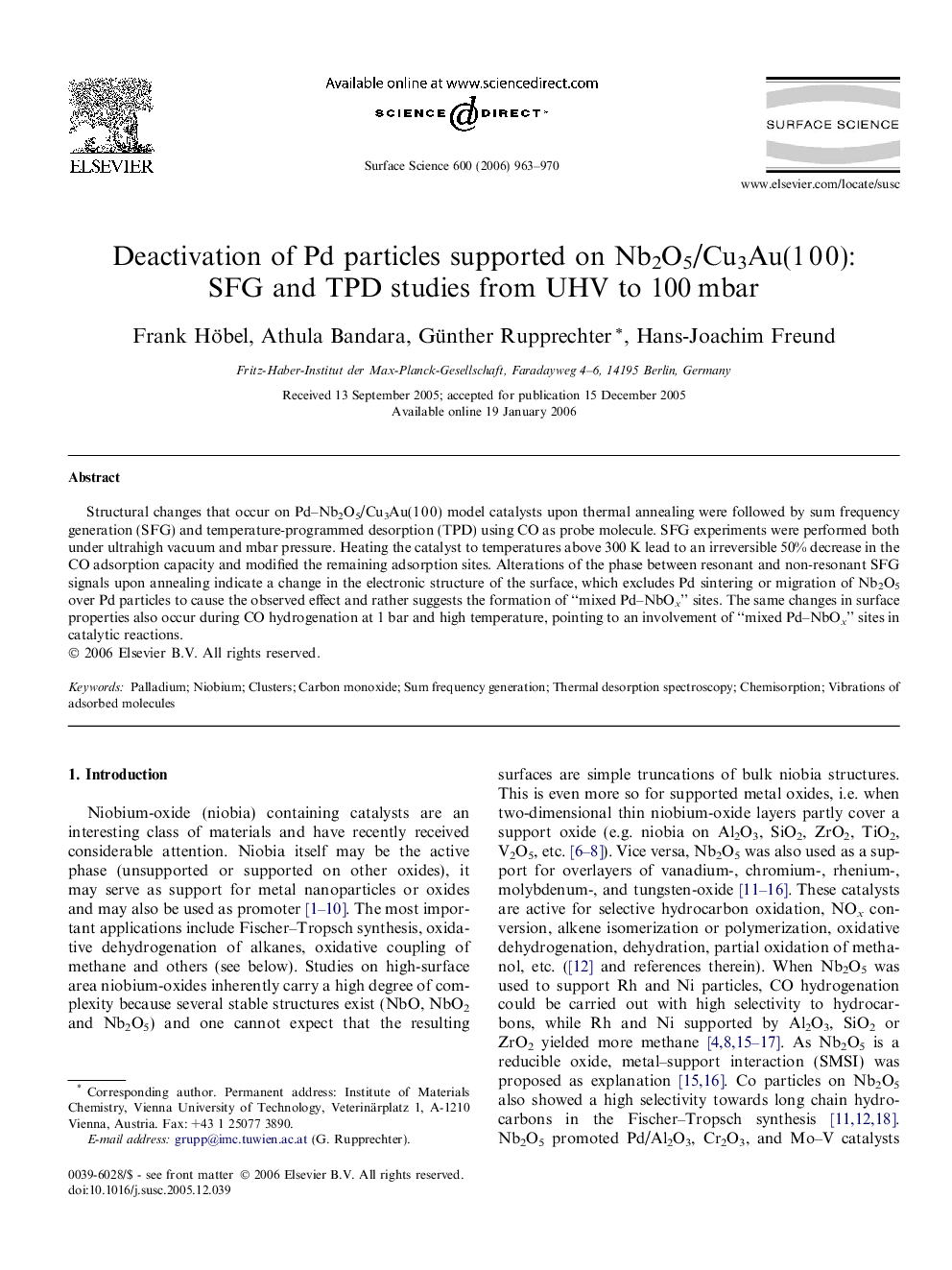| کد مقاله | کد نشریه | سال انتشار | مقاله انگلیسی | نسخه تمام متن |
|---|---|---|---|---|
| 5425986 | 1395871 | 2006 | 8 صفحه PDF | دانلود رایگان |

Structural changes that occur on Pd-Nb2O5/Cu3Au(1Â 0Â 0) model catalysts upon thermal annealing were followed by sum frequency generation (SFG) and temperature-programmed desorption (TPD) using CO as probe molecule. SFG experiments were performed both under ultrahigh vacuum and mbar pressure. Heating the catalyst to temperatures above 300Â K lead to an irreversible 50% decrease in the CO adsorption capacity and modified the remaining adsorption sites. Alterations of the phase between resonant and non-resonant SFG signals upon annealing indicate a change in the electronic structure of the surface, which excludes Pd sintering or migration of Nb2O5 over Pd particles to cause the observed effect and rather suggests the formation of “mixed Pd-NbOx” sites. The same changes in surface properties also occur during CO hydrogenation at 1Â bar and high temperature, pointing to an involvement of “mixed Pd-NbOx” sites in catalytic reactions.
Journal: Surface Science - Volume 600, Issue 4, 15 February 2006, Pages 963-970